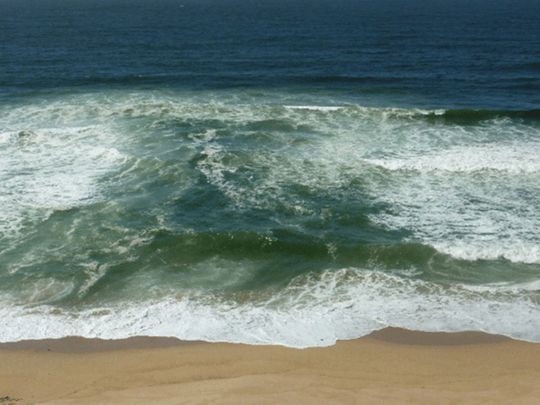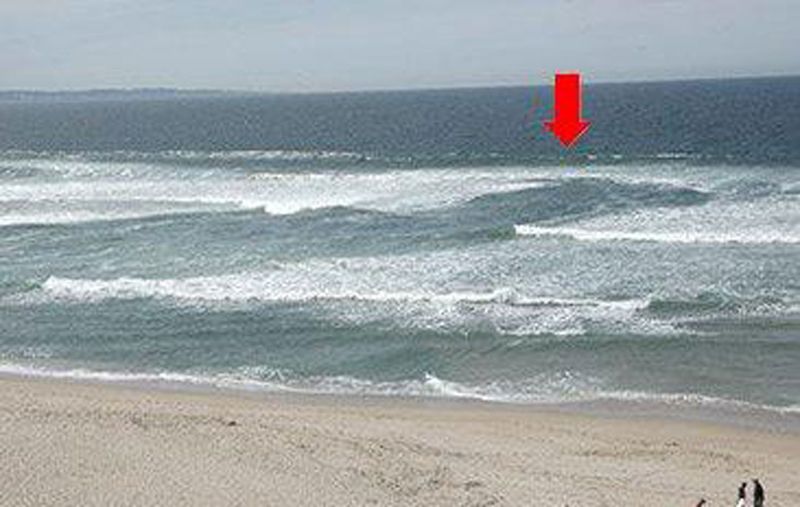
Dubai: Beaches across the emirates have reopened and while residents have to take safety precautions amid COVID-19, they should also take heed of warnings against rip currents.
Rip currents are a danger to even the strongest swimmers and can be found on many surf beaches, including the Jumeirah Coast. Rip currents most typically form at low spots or breaks in sandbars, and near structures such as sea walls, jetties and piers.

Speaking to Gulf News, Ibrahim Al Jarwan, member of the Arab Union for Space and Astronomy, explained that a rip current – known locally as Al Sayoura – can be described as a strong water current that often occur when breaking waves push water up shore. Rip currents can flow at an average speed of around 0.5 meters per second, and may reach up to 2.5 meters per second.
Beachgoers can identify the rip currents if they look for some clues, such as churning, choppy water; an area having a notable difference in water colour; a line of foam, seaweed or debris moving steadily seaward; or a break in the incoming wave pattern.
“The current may move in different directions where the wave crashes to different locations, which can reach tens of meters a day. Such types of currents pose a risk to swimmers, especially along the coastline, as they are difficult to spot,” he said.
“If you come across this type of current, swim in parallel with the beach, do not swim against the rip. And if you are tired, float on your back, catch your breath, and try again,” he pointed out.
According to the US National Oceanic and Atmospheric Administration, rip currents account for more than 80 per cent of water rescues on surf beaches and kill an average of 100 people annually in the United States.
How to spot a rip current
Rip currents are powerful, narrow channels of fast-moving water that can move faster than an Olympic swimmer.
Look out for these signs:
- Watch the waves. Is there a gap in the waves, where less waves break?
- Check the colour. Can you see the dark water on the beach?
- Look for foam. Are there foamy, sandy water out beyond the waves?
- Does the water seem strangely undulating or calm?
If the answer is ‘yes’ to all these signs, then take caution when swimming as they indicate the presence of a rip current.








